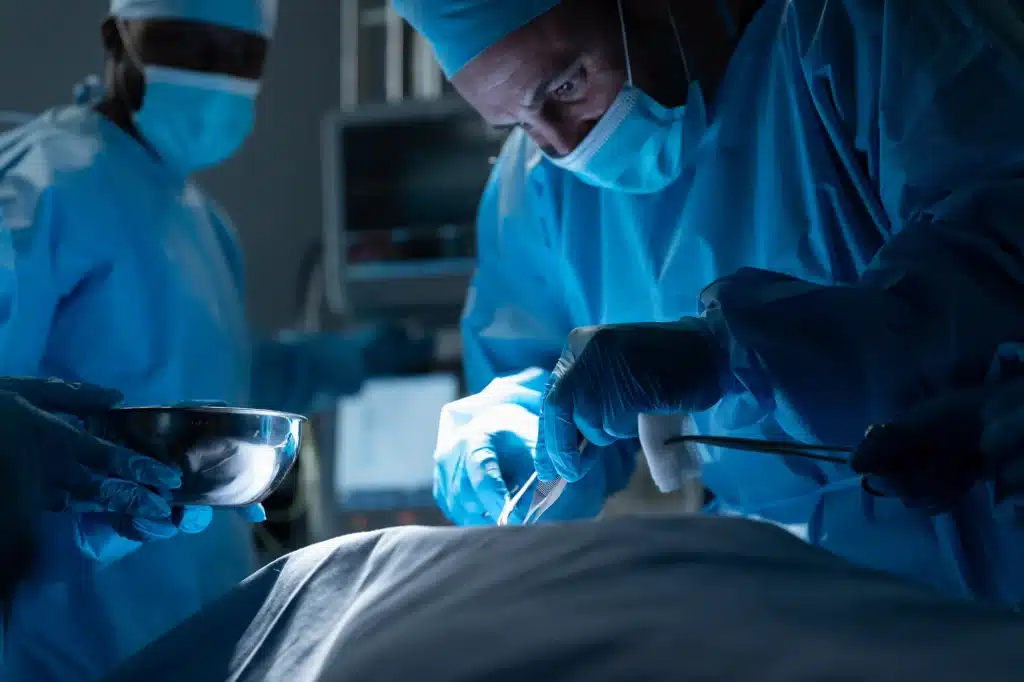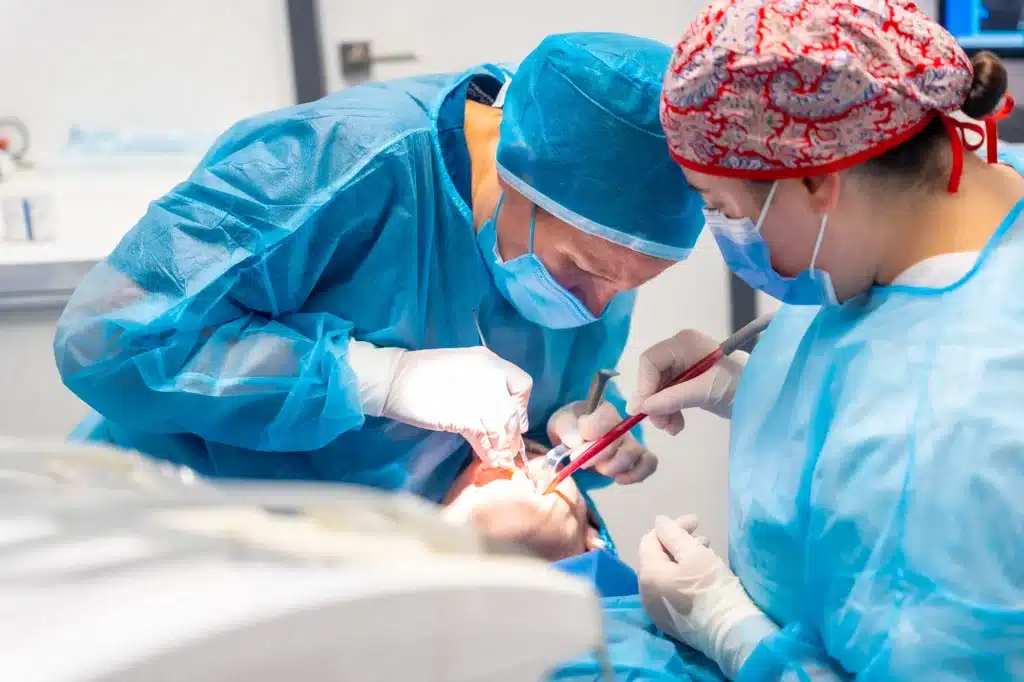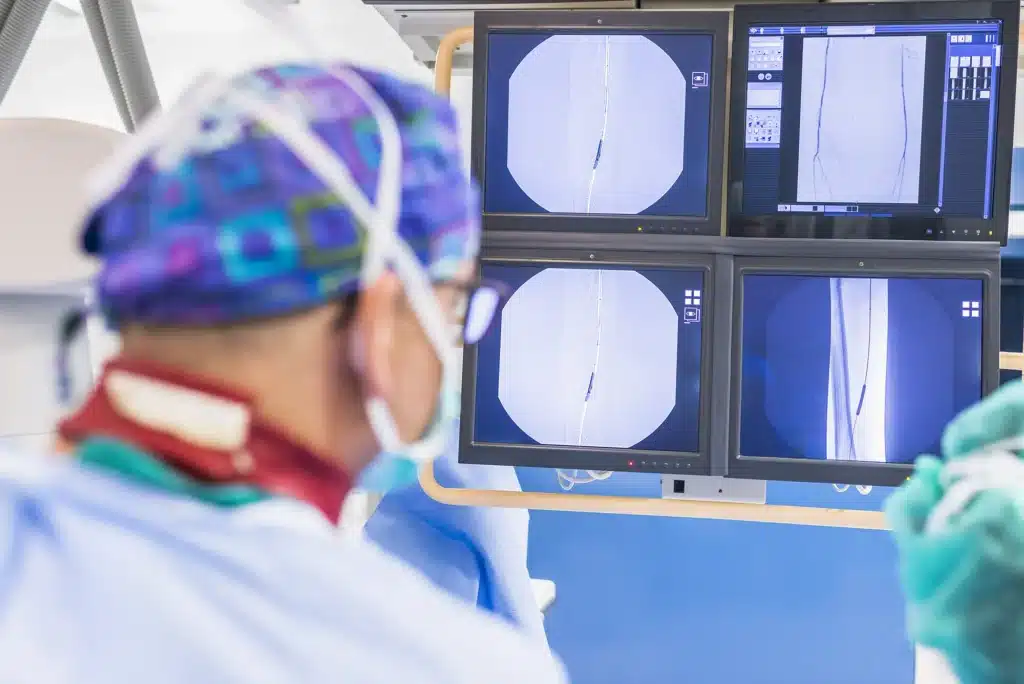
Table of Contents
ToggleAs a spine surgeon with over 30 years of experience at Long Island Neuroscience Specialists, I’ve witnessed first-hand the transformative impact of minimally invasive techniques on modern healthcare. These surgical methods involve making smaller incisions or no incisions at all, unlike traditional surgeries which often require large cuts.
This approach not only minimizes physical trauma but also significantly reduces recovery times, making it an increasingly preferred choice in numerous medical fields.

Minimally invasive techniques have revolutionized the way we approach surgery. These methods use cutting-edge technology to reduce the size and number of incisions needed, which fundamentally changes the recovery process for patients.
This approach is not just about smaller incisions; it’s about a whole new philosophy in surgery that prioritizes patient comfort and speedy recovery while minimizing risks.
In my three decades of practice, I’ve seen these techniques evolve from novel experiments to standard procedures. Initially reserved for simple tasks, they now facilitate complex surgeries including those in neurology and orthopedics, areas where precision is paramount.
The essence of minimally invasive surgery is to cause the least disruption possible to the patient’s body, which not only speeds up recovery but also significantly diminishes post-surgical complications.
In the realm of minimally invasive techniques, several innovative methods stand out due to their specific applications and benefits. For instance, laparoscopy, one of the earliest forms of minimally invasive surgery, is routinely used for procedures like cholecystectomy and appendectomy.
Robotic surgery, which provides enhanced precision, is particularly beneficial in delicate or complex operations such as prostatectomies or cardiac valve repairs.
Endovascular surgery represents another pinnacle of minimally invasive methods, involving small incisions and catheters to address vascular conditions—a technique that has profoundly impacted how we treat cardiovascular diseases. Meanwhile, techniques like thoracoscopy and arthroscopy allow us to address issues within the chest or joint disorders with minimal patient downtime.
At Long Island Neuroscience Specialists, we’ve utilized these techniques to remarkable effect, significantly improving outcomes in spinal surgeries and other complex procedures. By incorporating advanced imaging and robotic assistance, we’ve been able to push the boundaries of what can be achieved through minimally invasive approaches.
One of the most compelling advantages of minimally invasive techniques is the reduction in recovery times. These methods disrupt less body tissue, which translates to less pain and faster healing.
For instance, a patient undergoing a minimally invasive lumbar decompression might walk the same day and return to normal activities much quicker than if they had undergone traditional surgery.
In my experience, patients appreciate not only the shorter hospital stays but also the reduced need for postoperative pain management. This is crucial in today’s healthcare environment where the focus is increasingly on patient outcomes and satisfaction.
Furthermore, the less invasive nature of these procedures generally means a lower risk of complications like infections and bleeding, which are more common in open surgeries.

Despite their numerous benefits, minimally invasive techniques are not without risks and challenges. The precision required in these surgeries demands highly skilled surgeons and state-of-the-art equipment.
The complexity of the procedures can sometimes lead to longer operation times, which might increase the risk of certain complications.
Cost can also be a factor; the advanced technology involved in minimally invasive surgeries can make them more expensive than traditional approaches. Additionally, not all patients are suitable candidates for these techniques.
For example, individuals with specific heart or lung conditions might face increased risks from certain minimally invasive surgeries.
At our practice, we conduct a thorough assessment to determine the most appropriate surgical approach for each patient, ensuring that we maximize benefits while minimizing risks.
Technology plays a pivotal role in advancing minimally invasive techniques. In my practice at Long Island Neuroscience Specialists, we’ve embraced these developments wholeheartedly.
Robotic-assisted surgery, for example, has revolutionized the field. With the precision of robotic arms, surgeons can perform intricate procedures that were once impossible through keyhole incisions.
This results in greater accuracy, less blood loss, and quicker recovery times for patients.
Another technological marvel is the use of advanced imaging techniques. Real-time imaging, such as intraoperative MRI and fluoroscopy, helps guide surgical tools with unparalleled precision.
This minimizes collateral damage to healthy tissues, especially in delicate procedures involving the brain and spine.
Endoscopes have also evolved tremendously. They now come equipped with high-definition cameras that provide clear, magnified images to surgeons, further improving accuracy.
In many cases, advanced imaging and robotic technology combine to create single-port surgery, where the entire procedure is performed through a single, tiny incision.
These technological advances don’t just make surgeries safer and faster; they also expand the range of conditions that can be treated with minimally invasive methods. From complex spinal surgeries to heart valve repairs and neurological treatments, the breadth of their applications is ever-widening.

While minimally invasive techniques offer many benefits, not every patient is an ideal candidate. It’s crucial to weigh the advantages against the specific circumstances of your health condition.
As surgeons, our job is to provide a clear assessment and determine if these methods align with your treatment goals.
If you’re considering a minimally invasive procedure, keep these factors in mind:
At Long Island Neuroscience Specialists, our team provides personalized consultations to help patients make informed decisions. With decades of experience, we guide patients through understanding the options and choosing the best course of action for their unique situation.
Minimally invasive techniques have brought about a seismic shift in the field of surgery, empowering us to provide safer and more effective treatments for patients. The profound reduction in trauma, enhanced recovery, and lowered complication risks exemplify how medical innovation can improve the quality of healthcare.
As a surgeon, it’s been incredible to witness this transformation over the past 30 years at Long Island Neuroscience Specialists. Our team continues to refine our techniques, harnessing the latest advancements to deliver outstanding care to our patients.
We strive to ensure that minimally invasive surgery remains a beacon of hope for those seeking quicker recovery and improved outcomes.
Ultimately, this evolution in surgical care is not just about technology—it’s about prioritizing patient well-being. If you’re considering surgery, reach out to us to explore whether these methods might be suitable for your specific condition.
Minimally invasive techniques could very well be the revolution that transforms your recovery journey.
Our team at Long Island Neuroscience Specialists employs state-of-the-art technology to enhance patient outcomes. Learn more about our doctors here.
GET IN TOUCH +
285 Sills Road
Building 5-6, Suite E
East Patchogue, NY 11772
(631) 475-5511
184 N. Belle Mead Road
East Setauket, NY 11733
(631) 675-6226
GET IN TOUCH +
285 Sills Road
Building 5-6, Suite E
East Patchogue, NY 11772
(631) 475-5511
184 N. Belle Mead Road
East Setauket, NY 11733
(631) 675-6226
SUBSCRIBE TO OUR NEWSLETTER +
Send us a Google review. Click this link and let us know how we did!
Review us on Yelp too.